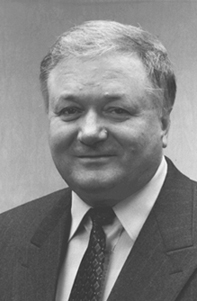2009 Antoinette de Vaucouleurs Memorial Lecturer: Rashid Sunyaev
The fourteenth award of the Antoinette de Vaucouleurs Memorial Lectureship and Medal honors the distinguished Russian astrophysicist Rashid Alievich Sunyaev.
Schedule of Events
>>Tuesday, October 27
Reception
6:00 p.m., ACES Atrium
Public Lecture
“The Richness and Beauty of the Physics of Cosmological Recombination”
-Dr. Rashid Sunyaev
7:00 p.m., ACES 2.302
Avaya Auditorium
>>Wednesday, October 28
Presentation of the Antoinette de Vaucouleurs Medal to Rashid Sunyaev
by Dan Jaffe, Associate Chair, Department of Astronomy
3:00 p.m., RLM 15.216B
followed by
Reception
Frank N. Edmonds Lounge
Antoinette de Vaucouleurs Memorial Lecture
“Cosmic Microwave Background, Clusters of Galaxies and Cosmology”
-Dr. Rashid Sunyaev
3:30 p.m., RLM 15.216B
Dr. Sunyaev received his M.S. at the Moscow Institute of Physics and Technology, and his PhD at Moscow State University. He became a Professor at the Moscow Institute of Physics and Technology (MIPT) in 1974, which prepares specialists in theoretical and applied physics, applied mathematics, and related disciplines. Subsequently he became head of the High Energy Astrophysics Department of the Russian Academy of Sciences, and has been chief scientist of the Academy's Space Research Institute since 1992. He is presently also Director of the Max Planck Institute for Astrophysics in Garching, Germany.
Dr. Sunyaev is perhaps best known as the co-discoverer of the Sunyaev-Zel'dovich effect or SZ effect (proposed with Dr. Yakov Zel'dovich) which is the result of high-energy electrons distorting the cosmic microwave back-ground radiation (CMB) through inverse Compton scattering. Observed distortions of the CMB spectrum are used to detect clusters of galaxies and the density perturbations in the universe.
He developed (with Zel'dovich) the theory for the evolution of density fluctuations in the early universe. His predicted pattern of acoustic fluctuations was subsequently observed by WMAP and other Cosmic Microwave Background (CMB) experiments, which explained features of the large-scale distribution of galaxies.
Dr. Sunyaev (with Nickolay Shakura) developed the now-standard model of disk accretion onto black holes, and he proposed a signature for X-ray radiation from matter spiraling into a black hole.
He led a team, which built and operated the X-ray observatory attached to the Kvant-1 module of the Mir space station, and also the GRANAT orbiting X-ray observatory. Kvant made the first detection of X-rays from a supernova in 1987.
Dr. Sunyaev's team is currently preparing the Spectrum-X-Gamma International Astrophysical Project.
See also:
In Memorium: Antoinette de Vaucouleurs
